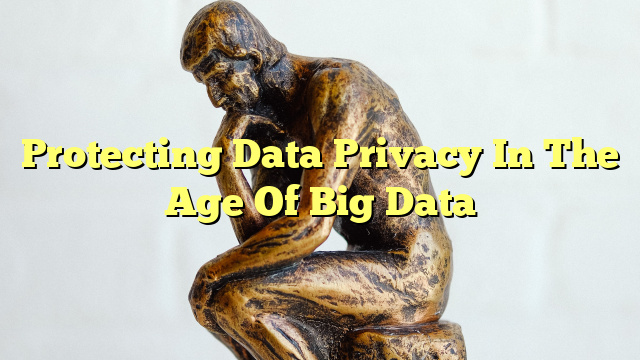Table of Contents
Introduction
In the age of big data, data privacy has become a matter of increasing concern. With the emergence of big data, people have access to unprecedented levels of data about their lives, habits, activities, and preferences. These massive data sets can be used for marketing and analysis, but they can also be used to exploit individuals and to expose sensitive information.
In this article, we will discuss how to protect data privacy in the age of big data, what the risks are, and what security approaches can be taken to protect data privacy.
Big Data and Privacy Risks
Big data is a term used to describe large amounts of data that can be used to generate insights and patterns in order to inform decision-making. These data sets can include customer data, financial data, and more. As such, the security of this data is of the utmost importance.
When it comes to data privacy, there are a few different issues that can arise when using big data. These include the potential for data to be gathered without consent, the potential for data to be used for malicious purposes, and the potential for data to be used to create profiles or make predictions about individuals. Here are the top three big data privacy risks:
- Data breaches: Data breaches are a major risk when it comes to big data. As the amount of data being collected and stored increases, so does the risk of a data breach that could compromise the security of the data.
- Data misuse: Another risk associated with big data is the potential for data to be used for malicious purposes. Data can be used to target individuals, to create profiles of people, and to create predictions about individuals.
- Data aggregation: Data aggregation is the process of combining data from multiple sources to create larger and more detailed data sets. This can lead to individuals being identified based on their data, which can lead to privacy violations.
Security Approaches to Big Data
Given the risks posed by big data, it is important to take steps to protect data privacy. Here are four approaches to big data security that can help protect data privacy:
- Data encryption: Encrypting data can help protect it from being accessed without authorization. Encrypted data will be unreadable to anyone who does not have the encryption key.
- Data minimization: Data minimization is the process of limiting the amount of data that is collected and stored. This can help reduce the risk of data breaches and misuse.
- Data anonymization: Anonymizing data is the process of removing personally identifiable information from data sets. This can help protect the privacy of individuals while still allowing the data to be used for analysis.
- Data access control: Access control is the process of limiting the ability of users to access data. This can help ensure that only authorized users are able to access sensitive data.
Conclusion
Protecting data privacy in the age of big data is an important task. By taking steps to encrypt data, minimize data collection, anonymize data, and control access to data, organizations can help protect the privacy of individuals and prevent data misuse.
In the end, protecting data privacy requires a combination of technical approaches and an awareness of the potential risks posed by big data. By taking steps to protect data privacy, organizations can ensure that their data is secure and that individuals’ personal information is not compromised.
In summary, to protect data privacy in the age of big data, organizations should take steps to encrypt data, minimize data collection, anonymize data, and control access to data. They should also be aware of the potential risks posed by big data and take steps to mitigate these risks. By taking these steps, organizations

